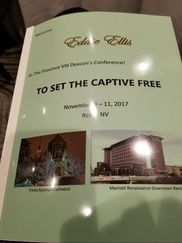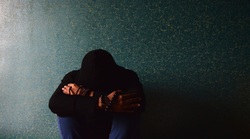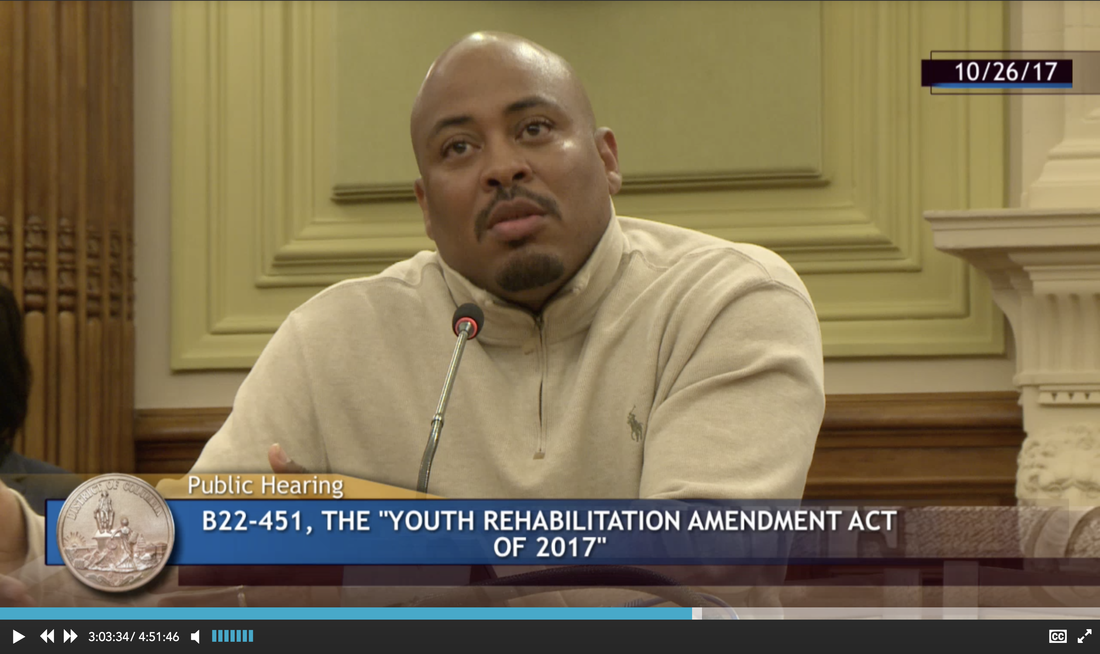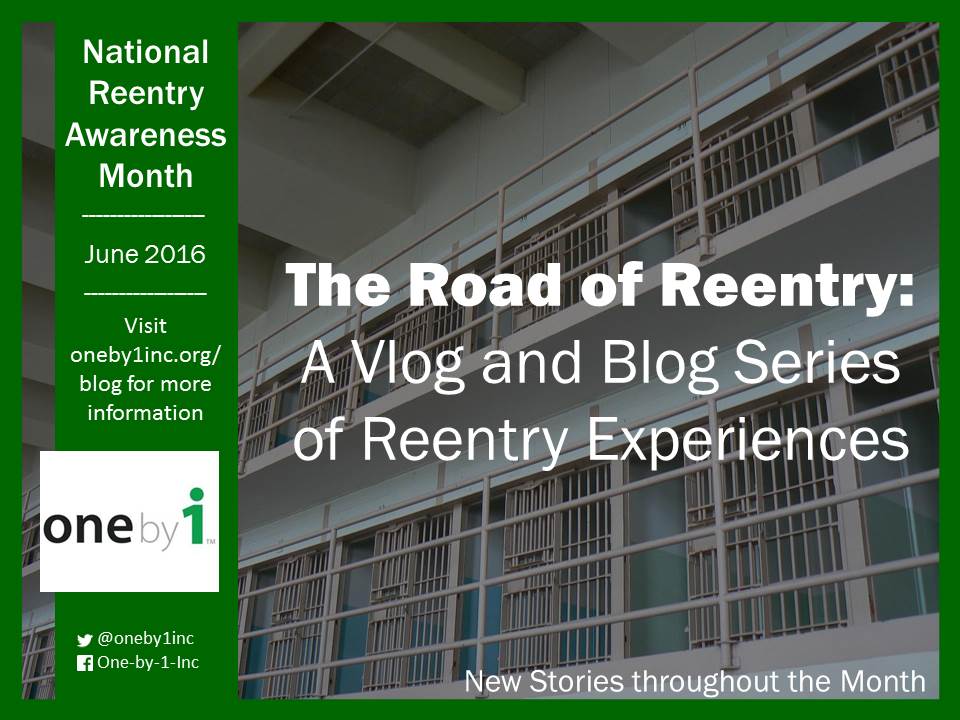 Eddie Ellis, Jr. was a panelist at the 2017 Province VIII Deacon's Conference, To Set the Captive Free, in Reno, Nevada from November 9-11, 2017. Province VIII of the Episcopal Church is made up of 900 congregations within 17 Dioceses and Navajoland Area Mission! Province VIII aims to encourage collaboration to strengthen ministry through: training workshops, online video conferences, retreats, and personal connections with peers among the diocese and their congregations. Learn more here.
0 Comments
 Eddie Ellis, Jr. participated in the Campaign for the Fair Sentencing of Youth's Annual Convening in Washington, DC. He was a panelist in the "Preparing Incarcerated Loved Ones to Return Home" workshop. This workshop addressed practical considerations for juvenile lifers returning home. The workshop was designed to equip the family members and loved ones of these juveniles with practical tips for making the transition home. The panel was moderated by Joanna Visser Adjoian, a co-director at the Youth Sentencing & Reentry Project. Additional panelists included: Ilyse Lerner, the owner of On Rye; Cindy Sanford, an advocate at the Pennsylvania Prison Society and family member of a juvenile lifer; and Leanna Williams, the sister of recently released juvenile lifer. Eddie Ellis, Jr., the One by 1, Inc. Founder/CEO, provided testimony to the District of Columbia Committee on Judiciary & Public Safety during a public hearing on B22-451, the "DC Youth Rehabilitation Amendment Act of 2017".
Watch Eddie's testimony here: In 2015, June was declared National Reentry Awareness Month. To bring awareness to reentry in America, we will be posting reentry stories throughout the month as part of our The Road to Reentry blog and vlog series. You will hear from people who have returned home from jail or prison. In these stories, they will share with us their reentry experiences, good and bad. And from their stories, we hope to demonstrate the importance of reentry supports, not only from federal and local governments, but also family and friends. Clips will be posted to our social media and will link to the full vlog or blog post located here. We hope you stay tuned and share!
UPDATE (1/2018): We were not able to launch this series, but may repurpose some of the content in the future. Stay tuned. Thanks! By: Monique Thornton @theMATmph  We’re a full month into 2016, and desperately trying to stick with our New Year’s resolutions. At least, I am. I have quite a few. But the most important one has nothing to do with me. It's easy to get focused what we need to improve in our own lives that we forget one simple fact: Improving the lives of others can help us improve ourselves too. And with the giving spirit of the holidays fading, if not already gone, I thought I'd rewind the clock for a minute and bring a little bit of that spirit back. Last October, I was lucky enough to help One by 1, Inc. host its annual Ballin' for a Cause community flag football and charity drive event. With this event, we had two goals: build relationships between law enforcement and the community members and host a successful charity drive. For last year’s drive, we collected new books and toys for kids being treated at Children's Hospital.  I would love to say that the giving spirit hit me when I was collecting those toys and books at the game. But it didn’t. It didn’t hit me until we dropped the toys off at Children's. When we arrived, we were greeted by amazing volunteers. They welcomed us and our goodies with such appreciation and gratitude. They thanked us repeatedly, took pictures with us, answered our questions, and really welcomed us with open arms. It was like we were visiting family. What stuck with me the most was the spirit of these volunteers. They took time out of their weekends to help sort and organize donations for Dr. Bear’s Closet. You could feel their passion for the organization. And it's that sort of passion that can cleanse the soul. They made me want to be more dedicated and reaffirm to my commitment to One by 1. And that is something I could not have gotten from anywhere else.  So find your cause! Find an organization that you believe in and give it all you can. You might find that in end, you got more from it than you could have ever put in. That it fuelled you and gave you purpose. That it gave you another family, another of circle of friends. That it made you whole. That it made you a better person. For more info on volunteering at:
 Over the past decade, an increasing number of school districts are bringing police officers into high schools, middle schools, and even elementary schools. Districts believe this will reduce crime as well as the risk of mass shootings. However, instead of making schools safer, the presence of armed police officers can lead to increase in crime or violence, and ultimately sends more kids into the juveniles justice system over issues that could be solved through standard disciplinary procedures. When police officers are stationed in school hallways, a minor violation of school policy can land a child in the system, sending them into a cycle that could be avoided. This is why schools with police officers see increases in crime. In many cases, officers are not trained in the fields of education or developmental psychology, so they handle situations based on the way they have been trained to handle adults. Police officers have more difficulty determining what is a legitimate security threat and what is simply a disciplinary issue than teachers and administrators. It has also been noted that minority students and students from low income families are disproportionately affected by the placement of police in their schools. A chapter of the NAACP in Texas reported that black students in the Bryan school district had four times as many criminal misdemeanor citations as white students. In a school district in New York, law suits have been filed against officers who arrest children for noncriminal behavior. Based on observation of the practice in action, it would seem that placing police officers in schools is a use of resources that creates a more penal school environment for students and puts them at risk of being put through the juvenile justice system for minor disciplinary offenses.  People with serious mental disorders (SMI) are incarcerated at rates that are higher than their representation in the actual population. This is a result of deinstitutionalization and order-maintenance policing (as mentioned in the previous blog post). With high numbers of individuals with SMI in prisons, reentry can be a daunting issue. About two thirds of offenders released from jails and prisons will recidivate; this rate is much higher when examining just offenders with SMI. Former President George W. Bush referenced the issue is his 2004 State of the Union, saying “[People with SMI that] can’t find work, or a home, or help, they are much more likely to commit crime and return to prison. . . . America is the land of second chance, and when the gates of the prison open, the path ahead should lead to a better life.” Lawmakers have been making strides to improve reentry programs for both adult and juvenile offenders with mental illnesses. The Second Chance Act of 2007 expanded services for the 600,000 offenders that are released yearly by providing employment services, substance abuse treatments, counseling, and mentor programs. Despite these new laws, old problems still persist. According to a study of a state prison in Texas, offenders with SMI as well as substance abuse problems have a much more difficult time with reentry. This means that rehabilitation after incarceration is key to a successful reentry. Women especially require special services for reentry because female offenders are more likely to have mental illnesses or substance abuse problems. In recent history, repeat offenders have been dealt with through harsher sentencing, however many researchers have found rehabilitative approaches could be more effective. Harsher sentencing laws mean that there are fewer reentry services provided to offenders that are about to be released and many chose not to take advantage of what little there is available to them. Individuals with untreated mental illness, addictions, and limited coping skills will have a more difficult time finding a home and employment after release. Drug rehabilitation and halfway housing programs are proven to be effective in reducing recidivism. Programs like these have been developed and enacted all over the U.S., however it is important that they be expanded. Another improvement could be making these services and programs not only more accessible but also incentivizing them for inmates with SMI. Equipping individuals, young and old, with mental illnesses with the skills they need for reentry into their communities could seriously reduce the population in state prisons and jails nationwide. By: Jean Vozella Ever since deinstitutionalization in the 1970s, there has been an increased rate in the arrest and incarceration of people with mental health conditions. Deinstitutionalization, the process of replacing long-stay psychiatric hospitals with community mental health services for those with mental health issues, began in 1963 when John F. Kennedy passed the Community Mental Health Act. This act created federally funded psychiatric institutions that patients in state facilities could be transferred to. It was meant to reduce the population of mental health institutions as well as reform their treatment processes so that those with mental health-related disabilities would be less dependent on institutional care. It meant the reducing of admissions to mental health facilities and the shortening of patient’s stays. There is debate over the effectiveness of this process as being less isolated has benefited many individuals with mental health conditions; however, it has left many others homeless, unemployed, or incarcerated.
A study of the incarcerated population of several European countries in 1939 led to the theory that the number of people in jails and the number of people in mental facilities was inversely related. This theory, later coined “balloon theory,” would be tested in the United States in the 1970s. When deinstitutionalization reduced the number of patients in psychiatric institutions, the incarceration rate of individuals with mental health conditions began to increase. Today, about 10 to 15% of inmates in state prisons have a mental health condition or a severe mental health-related disability. Many of these inmates have prior arrest records or had previously been institutionalized in a mental facility. It is difficult for these individuals to get the help they need in state prisons, and once they are released they have no home or family to return to. Without proper treatment and a strong support system, inmates with mental health-related disabilities are highly likely to be rearrested once they are released, creating a hopeless and dangerous cycle. Welcome to One by 1 Inc.'s Community Blog!
Please share your thoughts and concerns on community, health, youth, reentry, social justice and public policy related issues. |
Welcome to the Blog!Want to be an author?One by 1 and its volunteers, staff, interns, partners, clients, supporters, and friends are all welcome to post on our blog. Email us with your ideas! Archives
April 2018
Categories
All
|



 RSS Feed
RSS Feed
